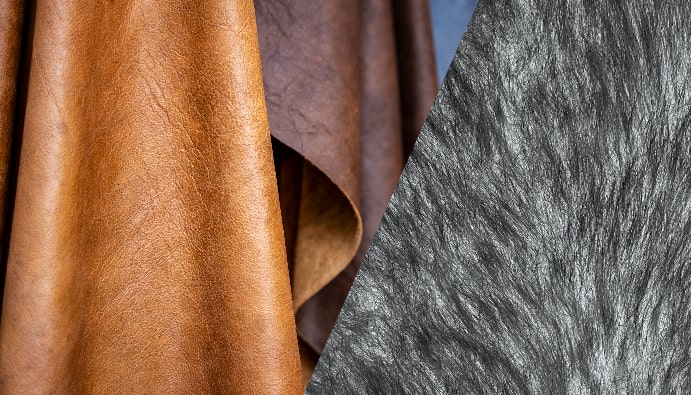GB 20400: Leather and Fur - Limit of Harmful Matter
Limits of Hazardous Substances in Leather and Fur Products

GB 20400 Standard
With GB 20400 standard, harmful substances in leather and fur products are restricted by China Leather Industry Standard Committee Organization. Leather and fur products are popular products in the textile industry. Many chemicals are used to process and make them usable. Certain concentrations of these substances can adversely affect human health. For this reason, the GB 20400 standard limits the main harmful substances in Leather and Fur Textile products.
In limitations, products are evaluated in three categories:
- Category A: Products for babies;
- Category B: Products with direct skin contact;
- Category C: Products without direct skin contact.
It is a standard applied to leather and fur products used in daily use. It is not applied to products used in industrial areas.
Textile products that can be assessed under the GB 20400 standard according to categories:
- Category A: Underwear, gloves, socks, socks, bonnets and bedding
- Category B: Bras, unlined gloves, socks, leather mat, unlined garments and form-fitting garments
- Category C: Leather jackets, skirts, tapestries and ornaments
Tests performed on Leather and Fur Textile Products within the scope of the standard:
- Decomposable Aromatic Amine Dye Determination: ≤ 30 mg/kg in all categories
- Determination of Formadehyde: Category A: ≤ 20 mg/kg, Category B: ≤ 75 mg/kg, Category C: ≤ 300 mg/kg
- In addition, in Category C, if the product is white sheepskin sheared leather, it should be ≤ 600 mg/kg.
Parameters Controlled under GB 20400
GB 20400 sets limits on harmful substances found in leather and fur products. The standard includes the types of chemicals used in the production of leather and fur products and their maximum permissible limits. These substances can be toxic, harmful chemicals, especially those used in the dyeing, processing or production stages of the products. Here are some of the main topics covered by the GB 20400 standard:
- Heavy Metals: Some heavy metals used in leather and fur products (for example, lead, cadmium, arsenic and mercury) can cause serious harm to human health. GB 20400 does not allow these heavy metals to be present in leather and fur products above a certain level. Excessive levels of these metals can lead to skin allergies, skin diseases and other health problems.
- Azo Dyes and Carcinogens: Azo dyes contain some carcinogens. The use of such dyes in leather and fur products is restricted as they may cause carcinogenic effects. GB 20400 stipulates that azo dyes used in leather and fur products must comply with certain limits.
- Phthalates: Phthalates are chemicals commonly used as plasticizers and can be used as softeners in leather products. However, these substances can have harmful effects on the endocrine system. GB 20400 sets the maximum levels of phthalates found in leather and fur products.
- Formaldehyde and Other Chemical Substance Limits: Although formaldehyde is a common chemical used during leather processing, it can have adverse health effects. Formaldehyde levels are limited by this standard because it can cause health problems such as skin irritations, allergic reactions and respiratory problems.
- Other Chemicals Used in the Production of Leather and Fur Products: Many of the chemicals used during leather processing can adversely affect user health if not used in the correct proportions. GB 20400 sets the usable levels of these chemicals and states that manufacturers should not exceed these limits.
Nanolab Laboratories Group continues to provide services within the scope of Consumer Analysis. We also provide services in Leather Product Analysis.
Contact us for more information.
You can follow us on LinkedIn for up-to-date news and posts about our services.
Follow our Instagram account to be informed about our latest blog posts.

